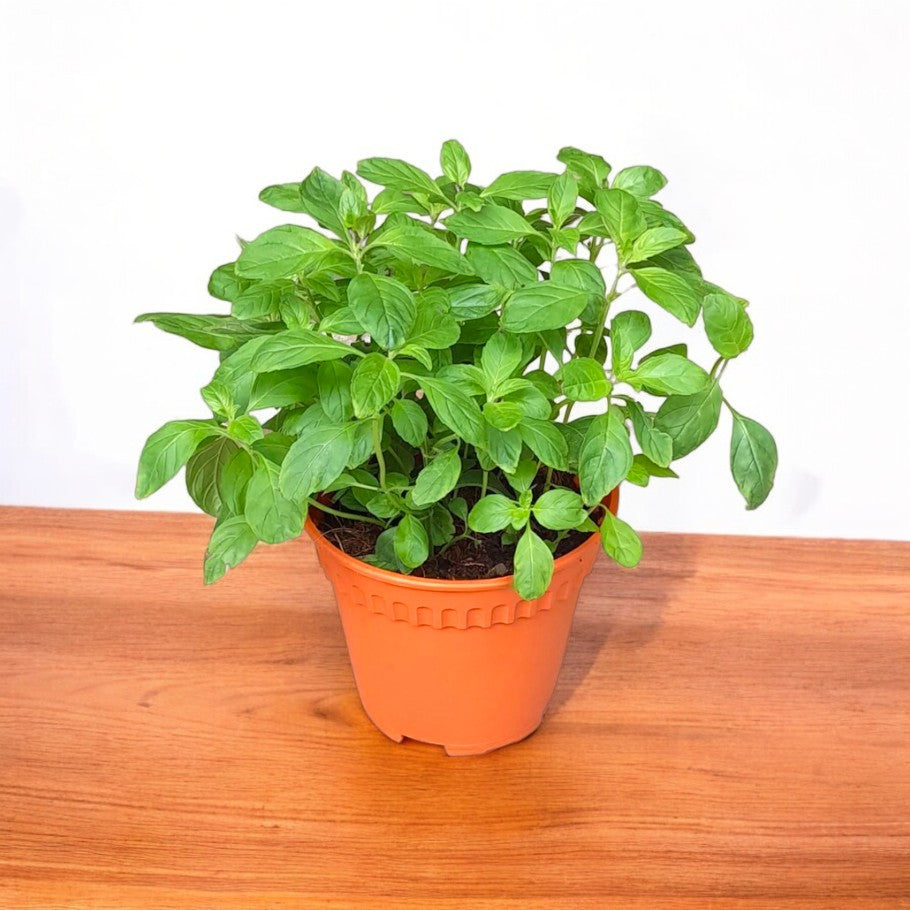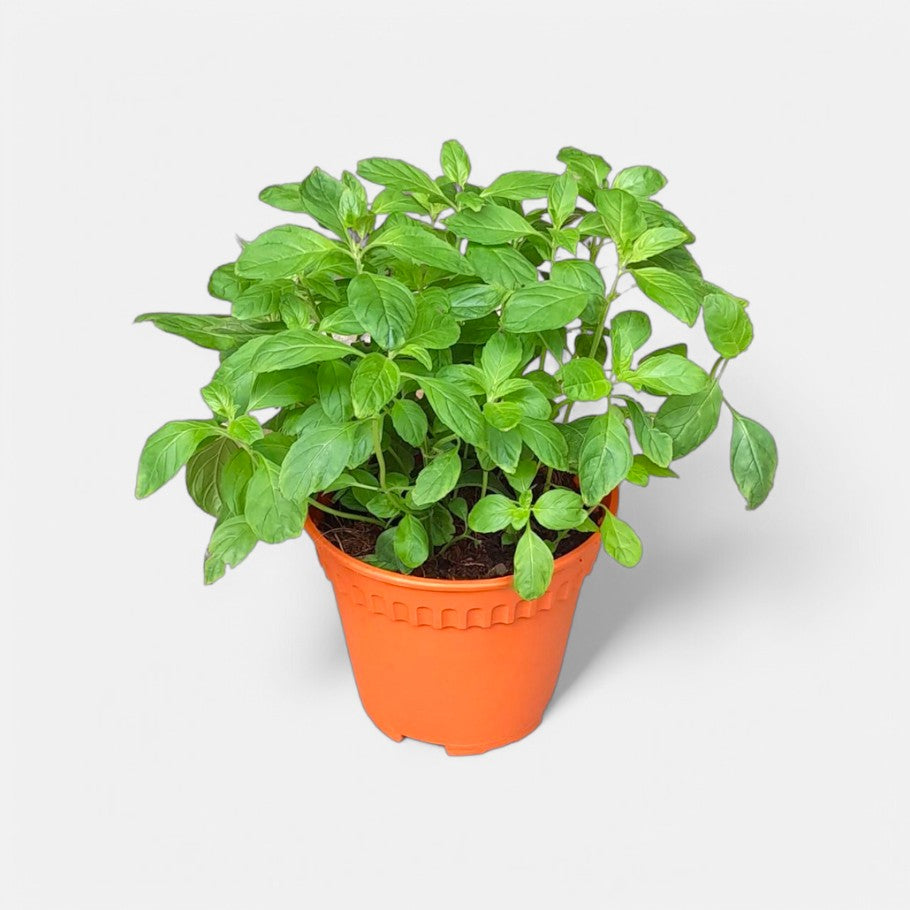

Brief Intro
Peppermint Plant
Basic Product Details
- Scientific Name: Mentha × piperita
- Common Names: Peppermint, Pudina, Mentha Plant
- Plant Height: 6-12 inches (approx.)
- Pot Size: 4-6 inch nursery pot
- Plant Type: Perennial, Aromatic Herb
- Soil Type: Well-draining, rich, moist soil
- Sunlight Requirement: Partial to full sunlight
Product Overview
The Peppermint Plant (Mentha × piperita) is a fast-growing, aromatic herb known for its refreshing fragrance, medicinal benefits, and culinary uses. A hybrid of watermint and spearmint, peppermint has dark green, lance-shaped leaves with a slightly serrated edge and a strong menthol scent. This easy-to-grow herb is perfect for kitchen gardens, balconies, and medicinal herb collections.
Features and Characteristics
Growth Habit
- Grows rapidly and spreads through underground runners.
- Can be grown in pots, garden beds, or hydroponic systems.
Leaves & Aroma
- Dark green, oval-shaped leaves with a cooling, minty scent.
- High in menthol, giving it a strong, refreshing fragrance.
Flowers
- Produces small, purple-lavender flowers that attract pollinators.
- Flowering can be controlled to focus energy on leaf growth.
Uses of Peppermint Plant
Culinary Uses
- Used in teas, salads, soups, and beverages.
- Adds flavor to chocolates, desserts, and smoothies.
- Used in herbal infusions and cooling drinks.
Medicinal & Health Benefits
- Aids digestion and helps relieve bloating.
- Used for cold, cough, and respiratory relief.
- Natural stress reliever, often used in aromatherapy.
- Has antibacterial and anti-inflammatory properties.
Household & Cosmetic Uses
- Used in homemade essential oils, bath salts, and skincare.
- Repels mosquitoes and garden pests naturally.
- Can be used in homemade toothpaste or mouthwash.
How to Grow and Care for Peppermint
Light Requirement
- Prefers partial to full sunlight (4-6 hours daily).
Watering
- Requires regular watering, keeping the soil moist but not waterlogged.
- Prefers slightly damp soil conditions.
Fertilizer
- Grows well with organic compost or balanced fertilizers.
- Monthly feeding enhances leaf growth and flavor.
Pruning & Maintenance
- Regularly prune to promote bushy growth and prevent flowering.
- Trim every few weeks to encourage new leaves.
Pest Control
- Resistant to most pests but may attract aphids and spider mites.
- Use neem oil or mild soapy water spray for organic pest control.
Placement Suggestions
- Ideal for kitchen gardens, balcony planters, and herb gardens.
- Can be grown indoors near a bright window or outdoors in pots.
- Suitable for companion planting with vegetables like tomatoes and peppers.
Common Questions & Answers
Can I grow peppermint indoors?
Yes, it thrives in bright, indirect sunlight and regular watering.
How often should I harvest peppermint leaves?
You can harvest leaves every 2-3 weeks for continuous growth.
Does peppermint repel mosquitoes?
Yes, the strong menthol scent naturally deters mosquitoes and insects.
Can I use peppermint leaves fresh or dried?
Both! Fresh leaves are great for teas and garnishes, while dried leaves can be stored for later use.
How do I prevent my peppermint plant from spreading too much?
Grow in pots or raised beds to control its spread, as it can grow aggressively.
FAQs:
What is the Return Policy?
This product is Not Returnable. It may be replaced or refunded in case of damage or defective condition on a case to case basis.
How to cancel my order?
Cancellation for Live Plants is allowed before the dispatched. You can request cancellation through Your Orders page or by contacting customer service within that time.
What if i received damage product?
If a product is received in a damaged or defective condition, you need to contact the customer service within 1 days of delivery. Free of cost replacement or refund claim is available to you.



